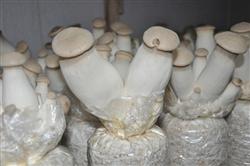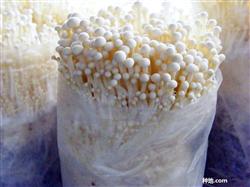What should be paid attention to in cultivating Flammulina velutipes?

What should be paid attention to in cultivating Flammulina velutipes? Please guide the cultivation of Flammulina velutipes to pay attention to the following points: temperature Flammulina velutipes belongs to low-temperature fruiting fungi. The mycelium grew in the range of 3 ℃ ~ 34 ℃, and the most suitable growth temperature was 20 ℃ ~ 30 ℃. The mycelium grew slowly at 3 ℃ ~ 4 ℃. The temperature required for Flammulina velutipes fruiting body formation is about 5 ℃ ~ 20 ℃, and the most suitable temperature for primordium formation is 12 ℃ ~ 15 ℃. The differentiation of 13 ℃ fruiting body is the fastest and the number of primordia is the most. In the range of 21 ℃ ~ 23 ℃, only a few thin fruiting bodies grow and are easy to dry up. After the fruit body differentiation, the fruit body developed normally in the range of 3 ℃ ~ 20 ℃, the fruit body below 3 ℃ was dysplastic, the cap changed to maltose color, and the quality decreased. When the water content of humidity medium is 63%-65%, the mycelium grows fastest. Too much water content, the mycelium growth is slow, and even can not extend to the substrate, but because Flammulina velutipes can not spray water on the fruiting body, the actual water content should be 70%. The relative humidity of the air in the mycelium culture room is about 60%. If the humidity is too high, it will increase the contamination rate of the strain bottle. The air relative humidity of the mushroom room should be controlled at 80%-90%. Flammulina velutipes in the air is a kind of aerobic fungus, which must have enough oxygen when it comes out of mushrooms. After the fruiting body is formed, the diameter of the cap decreases with the increase of the concentration of carbon dioxide (0.06%-4.9%). If the content of carbon dioxide exceeds 1%, the development of the cap will be inhibited, and 3% of the carbon dioxide will not affect the development of the stalk, but not more than 5%. The pH value of Flammulina velutipes needs a slightly acidic medium, and the mycelium can grow in the range of pH 3 to 8.4, and the suitable pH value is 4 to 7. In general, the natural pH (pH6) value of the substrate can be used. Flammulina velutipes is a light-averse fungus, the mycelium grows normally in the dark, and young primordia can also be formed, but light is necessary to promote the occurrence and maturation of fruiting bodies. The light is strong, the stalk is short, the cover opens the umbrella quickly, the color of the fruiting body is dark, the light is weak, the color of the fruiting body is light, and the appearance is good. Click to get more Flammulina velutipes cultivation techniques click to get more edible mushroom cultivation techniques
- Prev

How to cultivate Pleurotus eryngii with bag material for high yield
How can Pleurotus eryngii cultivated with bag material produce high yield? Pleurotus eryngii is a large fleshy umbrella fungus with good quality, which belongs to Pleurotus ostreatus, Pleurotus ostreatus and Pleurotus ostreatus. Fruit body solitary or group, thick meat, slow umbrella opening, dense stalk tissue, snow-white thick, few spores, long shelf life, different from ordinary Pleurotus ostreatus, delicious taste.
- Next

Flammulina velutipes black spot disease rust disease how to do?
Flammulina velutipes black spot disease rust disease how to do? Please guide one, black spot disease: is a bacterial disease caused by pseudomonospora. After the disease, Flammulina velutipes cap appears oval brown or dark brown spots, initially needle-like, enlarged diameter of 2-4 mm, neat edges, sometimes cap cracking. Prevention...
Related
- Fuxing push coffee new agricultural production and marketing class: lack of small-scale processing plants
- Jujube rice field leisure farm deep ploughing Yilan for five years to create a space for organic food and play
- Nongyu Farm-A trial of organic papaya for brave women with advanced technology
- Four points for attention in the prevention and control of diseases and insect pests of edible fungi
- How to add nutrient solution to Edible Fungi
- Is there any good way to control edible fungus mites?
- Open Inoculation Technology of Edible Fungi
- Is there any clever way to use fertilizer for edible fungus in winter?
- What agents are used to kill the pathogens of edible fungi in the mushroom shed?
- Rapid drying of Edible Fungi

